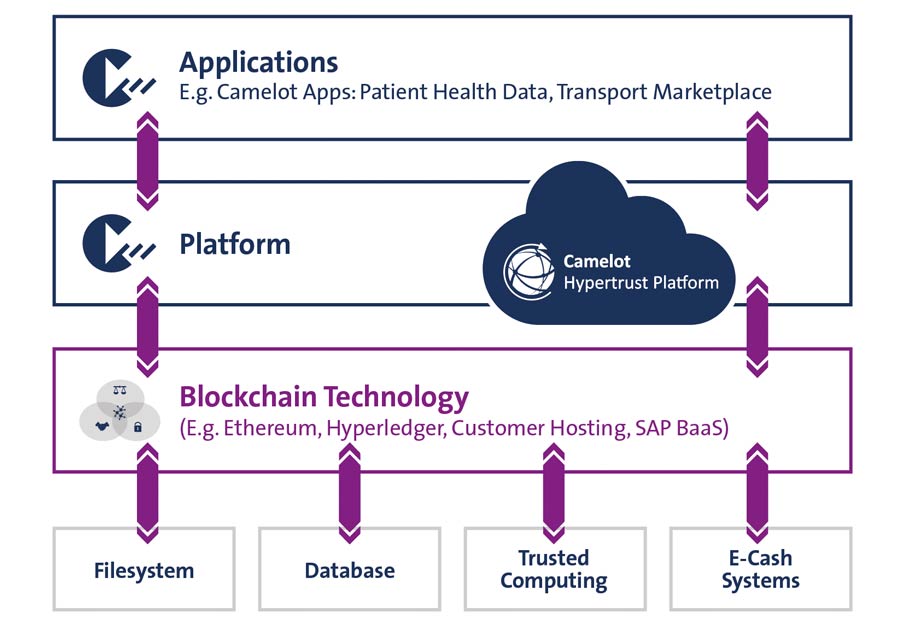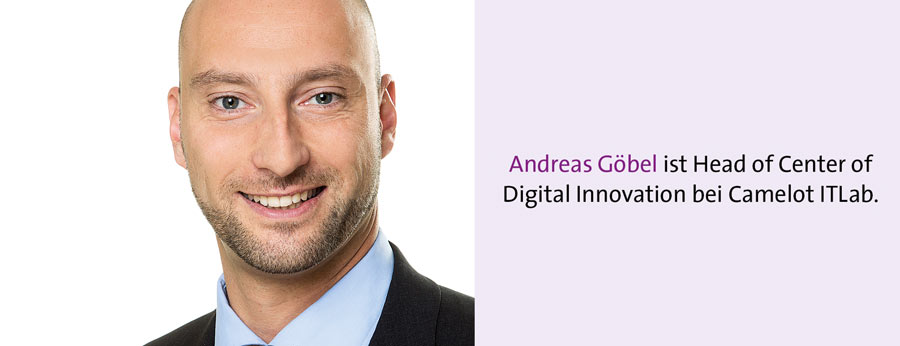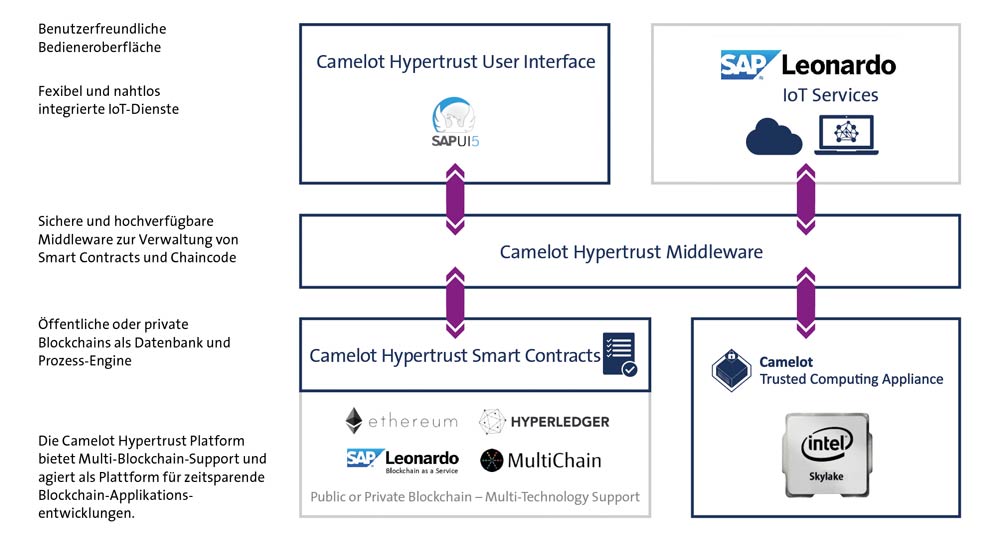Success Factor For Digital Transformation With Blockchain


The Camelot Hypertrust Platform contains configurable IT solution modules that can be used to develop and evaluate specific blockchain applications, for example to optimize logistics processes. Our experience goes back several years. Long before SAP announced a cloud-based blockchain platform as part of its SAP Leonardo portfolio in May 2017, Camelot teams had already begun to gain extensive experience with the use of the technology, which they then combined with newly created tools in a framework.
Customers benefit from this in particular. With the Camelot Hypertrust Platform, prototypes can be created in just a few weeks. The platform is a central component of Digital Experience², Camelot's product and service portfolio for accelerating the digital transformation of companies. The Hypertrust Platform also enables companies to realize completely individual use cases.
Technological basis
Camelot's first development projects with Ethereum blockchain technology aimed to optimize blockchain network management and the development of distributed applications. Features such as rapid network bootstrapping, smart contract deployment, service provisioning and integration, application development and DALM (Distributed Application Lifecycle Management) were on the roadmap right from the start. Today, the framework of the Camelot Hypertrust Platform consists of an intuitive user interface based on SAPUI5 and Node.js middleware as a link between blockchain, smart contracts, user interfaces and external services - such as those of the SAP Leonardo IoT platform. The middleware also acts as a server for the operation of distributed applications. Camelot's core supports not only Ethereum, but also other blockchain technologies such as Hyperledger Fabric and Multichain.
SAP Leonardo: Blockchain as a Service
Camelot also integrates web services from the SAP Baaas platform (Blockchain as a Service) Leonardo, which in turn supports various blockchain solutions. The question may arise as to what added value the Hypertrust Platform has when SAP has a similar offering with its BaaS portfolio. The Camelot solution is aimed at a clearly defined area that is deliberately not covered by SAP: SAP strongly emphasizes the distributed operation of blockchain networks and thus also the connection of on-premise nodes to SAP BaaS instances. However, without offering the platform contained in Leonardo and its advantages on-premise. This is where Camelot comes into play: the Hypertrust Platform has similar features for smooth blockchain node operation as well as associated development tools and is therefore a perfect addition to the SAP BaaS offering - regardless of whether operation takes place on-premise or in a managed cloud such as SAP Cloud Platform, SAP Cloud Foundry or AWS.
Intelligent interlocking
In our experience, hardly any use case ends up exclusively in the blockchain area. There are no isolated solutions when it comes to digitalization topics. Blockchain, IoT, AI, cloud, mobility - all these topics are closely interwoven. This was another reason for developing the Camelot Hypertrust Platform. Thanks to the latest concepts, it enables the necessary integration of all current megatrends. Camelot is already using this omnipotent tool to implement prototypes as part of its Camelot Digital Experience² service and product portfolio.
The Hypertrust Platform also makes it possible to look beyond the horizon of current development trends. New blockchain technologies or related technologies can be analyzed and evaluated at a rapid pace as part of proof-of-concept implementations. This often leads to the following conclusions: Blockchain alone is not the panacea. On the one hand, many use cases require the integration of other innovative technologies. On the other hand, a blockchain often needs to be supplemented by additional components, such as distributed file systems or databases for high-performance storage of mass data and trusted computing for the trustworthy processing of completely private data. Camelot is therefore also continuously developing the Hypertrust Platform in these areas.

Use case: patient data management
In the analog healthcare system, patients are usually not in possession of their data. Instead, it is distributed among various doctors or other healthcare facilities without a patient having access to it or being able to dispose of it independently. Blockchain technology can now change this. Each user could have their own patient file that they control (similar to a Bitcoin account), which contains all personal health data. This data can only be accessed with the patient's clear permission via the smart contract. The electronic patient file in the blockchain makes it possible to completely dispense with paper in healthcare processes. The blockchain enables a huge healthcare network in which patients voluntarily provide health data for research - something that is almost impossible to achieve using conventional means.
Use case: Uber-like transportation management
The use case involves the transfer of the Uber concept to logistics - especially in transportation management. A collaboration marketplace based on blockchain enables flexible and secure ad-hoc business relationships between previously unknown business partners. All participants can be clearly verified and identified by their blockchain account, which is required to participate in the marketplace. Orders are accepted within the marketplace using smart contracts. The resulting contracts between client and contractor are immutably and securely documented in the blockchain. The concept offers large companies the flexible use of transport service providers without having to go through a lengthy prior tendering process. It also opens up the market to smaller companies or individual service providers that were previously denied market access due to a lack of reputation.








